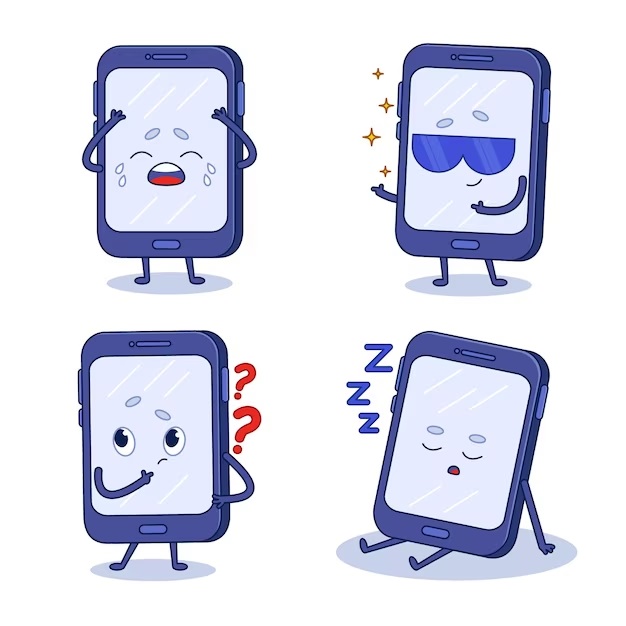How to Start a Conversation Online: Breaking the Ice
How to Start a Conversation Online: Breaking the Ice
Starting a conversation online can be intimidating, especially if you don’t know the person you’re reaching out to. The key to making a good first impression is to break the ice in a way that’s natural and engaging. One way to do this is by asking a question about something in their profile that caught your eye. This shows that you’ve taken the time to read their profile and you’re genuinely interested in learning more about them.
Another way to break the ice is by sharing something about yourself. This can be a personal story, a funny anecdote, or even just a comment about something you both have in common. By sharing something personal, you’re showing that you’re open and honest, which can help build trust and rapport right from the start.
It’s also important to keep the conversation light and fun. Don’t be afraid to use humor, ask lighthearted questions, or make a witty comment. Remember that the goal of the conversation is to get to know the other person and build a connection, not to impress them with your knowledge or accomplishments. Keep the tone friendly and positive, and avoid any controversial or negative topics that could turn the conversation sour.
Why is it Important to Break the Ice?
The term “breaking the ice” is commonly used to describe the process of initiating a conversation with someone, particularly when meeting them for the first time. Breaking the ice is an important social skill because it helps to establish relationships and foster connections with others. Without breaking the ice, it can be difficult to establish a comfortable dialogue or to build rapport with others. Breaking the ice can be particularly helpful in business settings, as it helps to establish trust and build relationships with clients, colleagues, and partners.
Breaking the ice can be accomplished in a variety of ways. One effective method is to ask questions about the other person and their interests. This can help to establish a common ground and to establish a connection based on shared interests. Another effective method is to share a personal story or anecdote that is related to the current situation or topic of conversation. This can help to establish a human connection and can help to build trust and rapport with others.
Breaking the ice is an important skill that can be developed with practice. It can be helpful to plan ahead and to prepare a few conversation starters or questions ahead of time. Additionally, it can be helpful to approach the situation with an open mind and a positive attitude. By being friendly and approachable, you can make it easier for others to approach you and to initiate a conversation. Ultimately, breaking the ice is an important skill that can help you to build relationships, establish trust, and succeed in both personal and professional settings.
Tips For Making a Good First Impression Online
Your online presence is just as important as your physical presence. Therefore, it is crucial to create a good first impression online. The first step is to ensure your profile picture is professional and appropriate. It should reflect your personality while giving off a good impression. Make sure your username is also professional and easy to remember.
Another important tip is to ensure your social media accounts are up to date and have relevant information about yourself or your business. This includes your bio, contact information, and recent posts. Your online activity speaks volumes about who you are, so be mindful of the kind of content you post, like or comment on. It is also a good idea to keep your accounts private if possible, so you can control who sees your activity.
Communication is key when it comes to making a good first impression online. Make sure you respond promptly to messages, emails or comments. This portrays you as a responsible and reliable person. When communicating online, avoid using slang or poor grammar, as it can reflect poorly on you. Always proofread your messages before sending to ensure there are no errors. And don't forget to be friendly and respectful in your communication, as this builds trust and confidence in your character.
Best Ways to Break the Ice Online
Breaking the ice online can be challenging, especially if you're not sure how to approach someone. One of the best ways to get started is to find common ground with the person you're interested in. Look through their social media profiles or review their interests on their dating profile. Use these interests as conversation starters to create a connection. Another tactic is to ask open-ended questions, such as, 'What's your favorite way to spend a Saturday afternoon?' This shows that you're genuinely interested in getting to know the person and can create a more meaningful conversation.
Another great way to break the ice online is by sharing something personal about yourself. This opens up the conversation and creates a more intimate connection. For example, you could say something like, 'I've always had a fear of heights, but I'm hoping to conquer that fear by going skydiving next month.' This shows vulnerability, which can also encourage the other person to share something personal as well. Finally, it's essential to have a positive attitude and be respectful. Avoid using pick-up lines or making inappropriate comments, and focus on creating a friendly, approachable conversation.
While breaking the ice online can be challenging, using these techniques can help you get the conversation started. Remember, the goal is to create a connection with the other person and leave a lasting impression. By finding common ground, asking open-ended questions, sharing something personal, and being respectful, you can turn an awkward encounter into a meaningful conversation. So next time you're struggling to break the ice online, give these techniques a try and see how they work for you!
Having Fun With Icebreakers
The first paragraph discusses how icebreakers can be fun and effective tools to build rapport among individuals or teams. It talks about how these activities can create a light-hearted and relaxed atmosphere, which is crucial when trying to break down barriers and encourage people to open up. Icebreakers can also help build trust, which is an essential component when working collaboratively towards a common goal. The paragraph concludes with the idea that icebreakers can be both enjoyable and productive, and that there are many different types of icebreakers that can be used depending on the situation or the group's preferences.
The second paragraph looks at some examples of icebreakers that can be used in different scenarios. For instance, there are games that can be played to break down hierarchies in a team or to encourage different personality types to interact more freely. There are also icebreakers that focus on improving communication, such as ones that require participants to work together to solve a task or to share personal stories. The paragraph emphasizes the importance of choosing the right type of icebreaker for the particular situation and making sure that everyone is comfortable with the activity.
The final paragraph wraps up the article by highlighting some of the benefits of using icebreakers. These include improved communication, increased team cohesion, and enhanced creativity. Icebreakers can also be a useful tool for identifying individual strengths and weaknesses and creating opportunities for personal growth. The paragraph encourages readers to try out different icebreakers and to experiment with them to see what works best for their particular needs. Finally, it ends with the idea that icebreakers can be a fun and motivational way to bring people together and foster a positive working environment.
The Power of Humor in Icebreakers
Humor is a powerful tool in breaking the ice in a group setting. It can quickly diffuse tension, create a relaxed atmosphere, and help build rapport among strangers. Laughter is known to release endorphins, which promote a sense of well-being and relieves stress. In a corporate or social setting, using humor can also demonstrate to colleagues or potential clients that you are approachable, easy-going, and personable.
One approach to incorporating humor in icebreakers is to use self-deprecating humor. By poking fun at yourself, you are letting others know that you don't take yourself too seriously, and you are open to sharing personal stories. This can help others feel more comfortable sharing their own experiences and can lead to more authentic and meaningful connections. However, it is essential to be careful not to offend anyone or deal with sensitive topics that may not be appropriate in a professional or social setting.
Another approach to using humor in icebreakers is to employ puns and lighthearted jokes. This can be particularly useful when introducing new concepts or ideas that may be considered dry or dull. Humor can help make information more digestible and memorable. However, it's essential to make sure that the humor doesn't overshadow the main topic at hand. Humor should be used as a supplement, not as a replacement in the exchange of information or ideas.
How to Ask Questions when Breaking the Ice
When breaking the ice with someone new, it's important to ask questions that are engaging and not too personal. Begin with easy, lighthearted questions to help create a comfortable atmosphere. For example, you could ask about their interests, hobbies, or the type of music they enjoy. Remember to listen to their responses and show an interest in what they have to say. This will not only make them feel valued but will also give you the opportunity to learn something new about them.
As the conversation progresses, you can gradually ask deeper questions to learn more about their values, beliefs, and experiences. However, it's important to avoid asking overly personal questions that may make the other person uncomfortable. Instead, try to ask open-ended questions that allow them to elaborate and share their perspective. This will help create a more meaningful conversation and deepen your connection with one another.
In addition to asking questions, don't forget to share a bit about yourself as well. After all, a conversation is a two-way street. Talking about your own interests and experiences can help create a sense of mutual understanding and build a stronger connection. Just be sure to balance talking about yourself with actively listening to the other person. With a bit of practice, you'll be able to ask engaging questions that lead to fun, memorable conversations, and maybe even new friendships.
Knowing What to AVoid When Breaking the Ice
Breaking the ice isn't always easy, but it's a necessary social skill if you want to make connections and build relationships. However, it's also important to know what to avoid when trying to break the ice. One common mistake people make is to start with a controversial topic, such as politics or religion. While these topics can be interesting to discuss, they can also be divisive and make people uncomfortable.
Another mistake is to try too hard to impress someone. This can come across as insincere and create an awkward dynamic between you and the other person. It's important to maintain a genuine demeanor and be yourself when starting a conversation. You don't need to be perfect or have all the answers, just be willing to listen and engage in a meaningful exchange.
Finally, it's important to avoid being too self-centered when breaking the ice. Focus on getting to know the other person by asking questions and actively listening to their responses. Don't dominate the conversation or bring everything back to yourself. Remember, the goal is to establish a connection with the other person, not just to talk about yourself. Keep the conversation balanced and enjoyable for both parties involved.
Engaging in Icebreaking Riddles and Puzzles
Icebreaking riddles and puzzles are excellent ways to engage with new people and build stronger relationships. When meeting someone for the first time, it can often be awkward and challenging to get to know them. Icebreaking riddles and puzzles provide a fun and interactive way to break down barriers and open channels of communication. They can also be used to inject some excitement and energy into a stagnant conversation.
Not only do icebreaking riddles and puzzles allow people to bond, but they are also excellent for cognitive development. These activities promote problem-solving skills, logical reasoning, critical thinking, and creativity. As individuals work to solve riddles and puzzles, they exercise their brain muscles and improve cognitive function. This is particularly useful for children or seniors who may be at risk of cognitive decline.
There are a variety of icebreaking riddles and puzzles, from simple to advanced, to cater to different groups and levels of complexity. Icebreaker riddles can be used as a game to introduce individuals or as a team-building exercise. Puzzles can be presented as a group or individual challenge, which encourages teamwork or promotes independent thinking. They can be used in a variety of settings, from classrooms to corporate boardrooms, to family reunions or even on a first date.
Easy Ways to Make Conversation Seemlessly
One of the most valuable skills one can possess is the ability to make conversation seamlessly. It’s a skill that can be learned and polished with practice. Start by paying attention to your surroundings and striking up a conversation about something that catches your eye. You can also use current events, personal experiences, or common interests as conversation starters. Remember to maintain eye contact, actively listen, and respond thoughtfully. These small gestures go a long way in making the other person feel valued and heard.
Another way to make conversation seamlessly is to ask open-ended questions. These types of questions encourage the other person to elaborate and share more information. Try to avoid asking closed-ended questions that can be answered with a simple yes or no. Instead, ask questions that begin with “what,” “how,” or “why.” This will lead to a more engaging and interesting conversation. Be sure to stay curious and show genuine interest in what the other person has to say.
Lastly, it’s important to remember that making conversation seamlessly also involves being mindful of your body language. Show that you are engaged and interested in the conversation by nodding your head, smiling, and maintaining good posture. Avoid fidgeting or checking your phone as it sends a message that you are distracted or disinterested. With practice and effort, making conversation can become second nature and an enjoyable experience for yourself and others.
Connecting With People Through Icebreakers
In a world that is growing increasingly technologically advanced, it can be surprisingly difficult to connect with people in person. One way to make this process easier is through the use of icebreakers. These are activities or games that are designed to help people get to know one another in a fun and engaging way. By using icebreakers, you can create a sense of community and build trust between people who may not have had the chance to interact before.
There are many different types of icebreakers that you can use depending on the situation and the group of people you are with. Some icebreakers involve physical activity, such as playing a game of catch or participating in a group dance. Others involve sharing personal stories or answering thought-provoking questions. Whatever type of icebreaker you choose, the key is to make it engaging and inclusive so that everyone feels welcome and involved.
Icebreakers can be particularly effective in educational and professional settings. For example, teachers can use icebreakers to help students get to know one another and feel more comfortable in class. Employers can use icebreakers to break down barriers between colleagues and create a more collaborative and supportive work environment. By using icebreakers, you can foster connections between people and create a positive atmosphere that encourages open communication and mutual respect.
Travel Tips for Those New to Online Conversations
Online conversations have become an integral part of daily communication. In today's digital age, people are more interested in communicating with others via online messaging apps, social media platforms, and other digital forums. If you are new to online conversations, it may be overwhelming to understand the dos and don'ts. Therefore, here are some essential travel tips for those who want to enhance their online conversation skills.
The first tip is to read and understand the platform's rules carefully. Different social media forums have different codes of conduct, and you need to adhere to them while communicating online. Secondly, be respectful to others' opinions and beliefs. Avoid using derogatory comments or engaging in heated arguments. Instead, try to maintain a calm and reasonable tone while communicating
Lastly, if you are unsure about a message's tone, it is best to clarify with the sender before replying. Online messaging can be tricky, and a message may come across negatively even if the sender did not intend it that way. Being cautious and double-checking your message responses will help avoid any misunderstandings or conflicts. These travel tips will ensure you have constructive and meaningful online conversations, benefiting you in both personal and professional settings.
The Benefits of Making Friends Online
In today's digital age, making friends online has become increasingly popular. With social networking sites, online forums, and chat rooms, there are endless opportunities to connect with people who share similar interests and hobbies. The benefits of making friends online are many, including increased social connection, exposure to new ideas and perspectives, and a sense of belonging.
Connecting with others online can be particularly beneficial for those who may have difficulty making friends in the physical world. Those who are shy, introverted or have social anxiety may find it easier to open up and express themselves in an online setting. Additionally, online friendships can be sustained despite distance and hectic schedules, allowing individuals to maintain connections even when faced with other obligations and responsibilities.
Moreover, making friends online provides a unique opportunity to learn about different cultures and experiences. By connecting with people from all over the world, individuals can broaden their horizons and gain a deeper understanding of different perspectives. Online friendships can also offer a support system for those going through challenging periods, providing a sense of community and a place to turn for advice and guidance. Overall, making friends online can enrich our lives in many ways, offering new friendships, connections, and perspectives that we may not have otherwise encountered.



